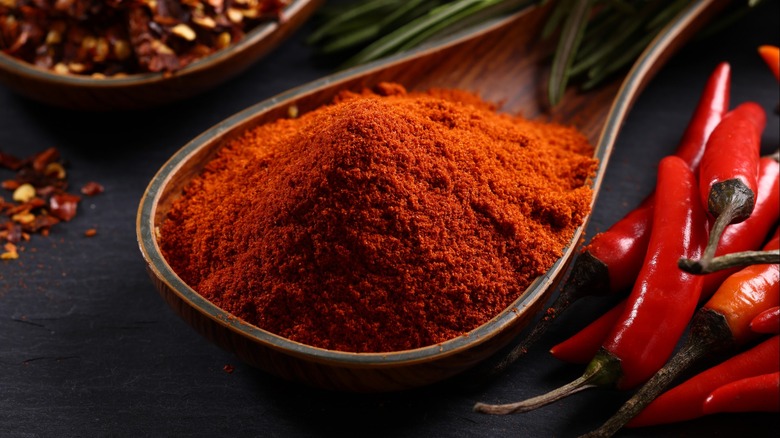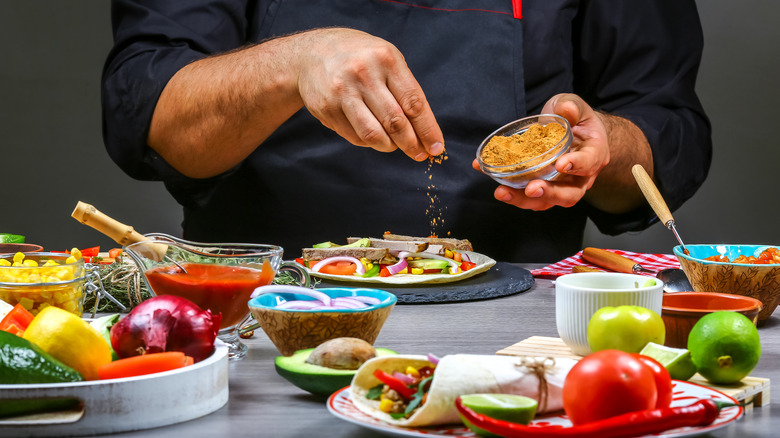Chili Powder Is The Smoky Swap For Cayenne Pepper That Still Brings Some Heat
Knowing the right time and place for spices is an acquired skill. If you're still feeling uncertain about reaching into the spice rack, you're likely following recipes to a T out of fear that you'll mess up whatever you're making. There's nothing wrong with following the directions, but, when you're ready to stretch your wings, the next step is feeling comfortable freestyling on top of a recipe. Which is to say, if a recipe calls for cayenne, but you don't want to use cayenne or don't have it, you know which other spices to reach for instead.
Luckily, pepper powders are less difficult than other spices (looking at you, dill). As a recap, cayenne pepper is a bright red-orange powder made from ground and dried cayenne peppers. It looks like someone turned fire into a kitchen spice and, for many people, it sits at the upper end of tolerable spice levels. Pepper heat is measured using the Scoville scale. Cayenne pepper has a rating of 30,000 to 50,000 Scoville heat units. For reference, jalapeños average out at around 5,000 Scoville heat units.
Chili powder, meanwhile, is a blend of ground and dried peppers. Some chili powders include cayenne pepper, which may be mixed with ancho chiles, chipotle chiles, onion powder, garlic powder, cumin, or paprika. Chili powder isn't as hot, despite containing cayenne pepper, sitting at a mild 500 to 1,500 Scoville heat units. You can find spicier chili powders that are often labeled as being extra hot, but this is the bird's-eye view.
Swapping chili powder for cayenne pepper
Despite the difference in heat, chili powder is an excellent substitute for cayenne pepper and vice versa. They're similar enough that the flavor of your dish won't be drastically altered while being unique enough to warrant substitution even if you have both available.
Due to their differences in heat, you can adjust how spicy you want your dish to be. If you're trying to make some delicious spicy fajitas that call for cayenne pepper, but you know that your family doesn't like that level of heat, substituting in chili powder is a great way to preserve the integrity of the dish while still accommodating everyone's preferences. Keep in mind that ½ teaspoon of cayenne pepper is solidly spicy, but ½ teaspoon of chili powder is lackluster. Whatever your recipe calls for, double your substitution of chili powder to make up the difference in strength.
Heat isn't the only reason to swap in chili powder, though. Cayenne pepper only has one ingredient: cayenne pepper. Chili powder, on the other hand, is a blend of spices with a characteristically smoky flavor, which probably comes from the chipotle peppers. If cayenne pepper isn't bringing enough flavor, try swapping in chili powder for new twists on old recipes.

